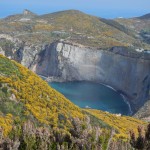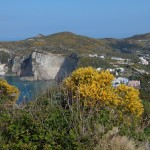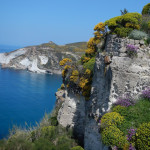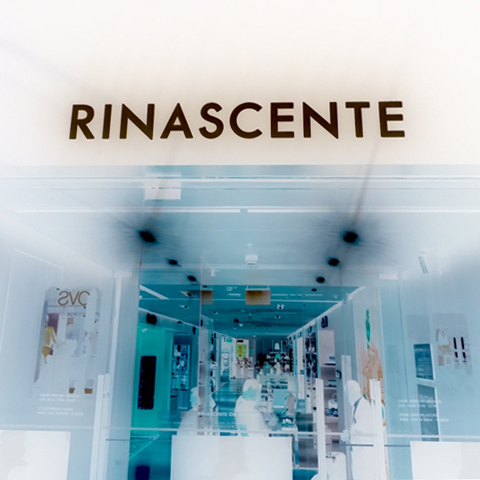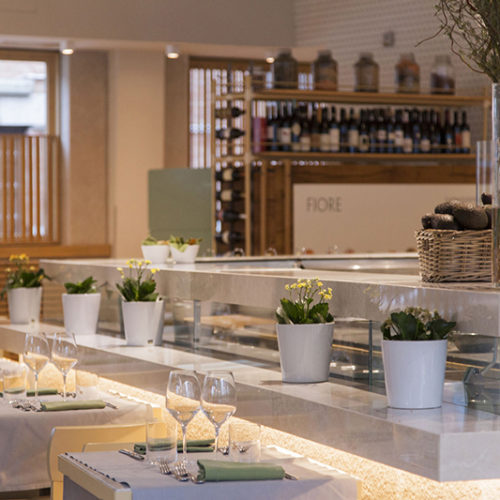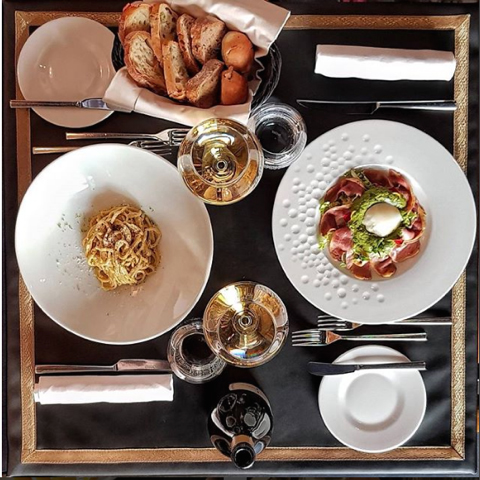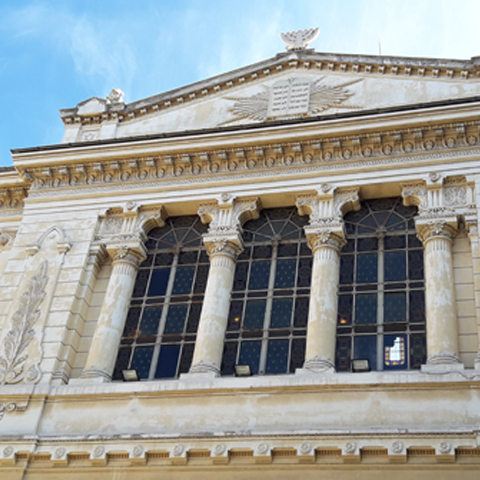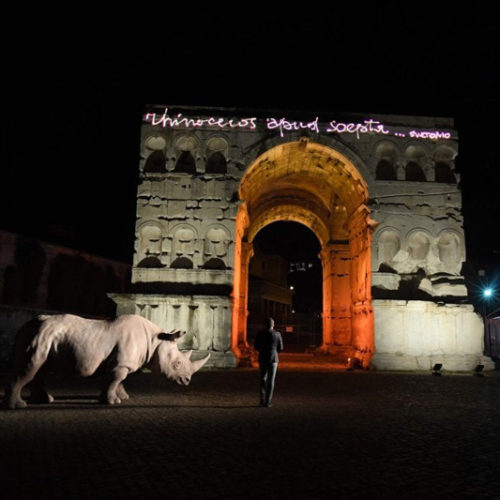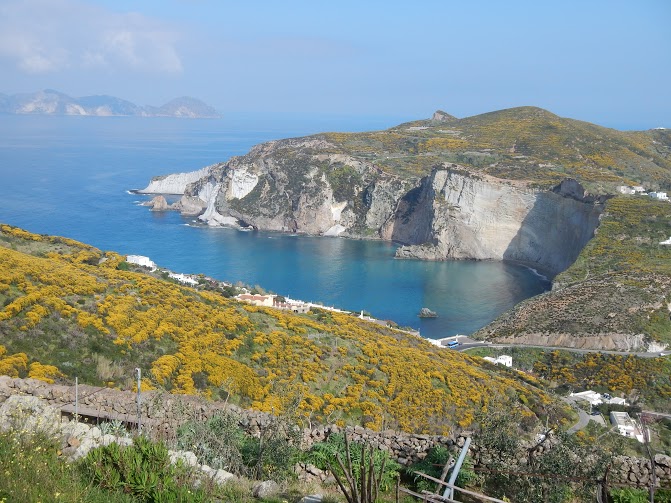
Ponza is recognized as one of the most beautiful islands in all the Mediterranean. Since Roman times, Ponza has enchanted visitors with the transparency of its surrounding sea and the beauty of its coasts. Today, it is among the most desirable destinations by tourists from around the world.
But few know the beauty of the hinterland: so rich in natural beauties, archaeological sites, engineering works dating back to the ancient Romans, historical buildings, and ancient culinary traditions. This is the heritage of beauty and culture that makes Ponza a must-see not only in summer, but also in spring and autumn.
Spring and autumn are the two magical seasons when you can experience the island in a different, more authentic and less touristy way. Here we can find also the traces of an ancient civilization that, from the Neolithic to the present day, has been influenced by Phoenicians, Greeks, Romans, and Volscians; peoples who inhabited and made fertile this island, giving birth to a culinary tradition of excellence.
The Island and its itineraries
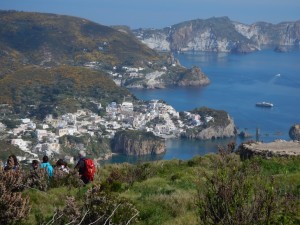 The most secret places of Ponza can be discovered thanks to dozens of kilometers of trails and walks of varying difficulty, suitable for everyone of all ages; and perfect to make in spring and autumn, due to the mild and cool climate.
The most secret places of Ponza can be discovered thanks to dozens of kilometers of trails and walks of varying difficulty, suitable for everyone of all ages; and perfect to make in spring and autumn, due to the mild and cool climate.
From the center of Ponza, for example, you can start your walk to Guardia Mountain. Through white houses, dry stonewalls, and Mediterranean bush, the trail forwards into the nature where the ruins of the Bagno Vecchio Necropolis suddenly appear: a series of underground tombs with traces of Hellenistic, Roman and Christian periods. Slightly higher comes a little quiet jewel, full of spirituality: the white church of the Madonna della Civita which, on July 21st each year, comes alive for the procession in honor of the Virgin Mary. And finally, you get to the Guardia Mountain top, which is 280 meters above the sea level and the highest point of the island, where you can admire a unique view.
Another interesting walk is at Forte Papa, the defensive bulwark built in the XVI Century by the Pope Paul III Farnese, and later fortified by the Bourbons in the XVIII Century in order to protect the western coast of the island and the inhabitants of the small village called Le Forna.
And then towards the north: again a walk in the Mediterranean vegetation, which crosses the northern cape until the last strip of Ponza land. It’s Punta Incenso, the end of Ponza island: an isolated place, chosen by many people to meditate and admire the small islet of Gavi, the island of Zannone, and the endless horizon.
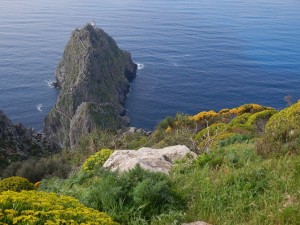 At the center and east coast of the island, we find the Bourbon Fort, reached by a short walk through the nearby village of Frontone. The fort was built to protect the Ponza port. (The fort is also called Bentinck Fort from the name of the Commander of the Anglo-Sicilian expedition that re-conquered the island in 1813.)
At the center and east coast of the island, we find the Bourbon Fort, reached by a short walk through the nearby village of Frontone. The fort was built to protect the Ponza port. (The fort is also called Bentinck Fort from the name of the Commander of the Anglo-Sicilian expedition that re-conquered the island in 1813.)
It is also possible to stay and explore in the main town and make a striking discovery: Ponza Cemetery. Perched on a spur of rock, the Cemetery overlooks the sea in an atmosphere of calm and serenity. This is a peaceful place steeped in history; from prehistory to the wars between the French and English in the early ‘800s.
Visiting Ponza off-season is the perfect time to see the town with new eyes: a network of narrow, whitewashed streets, colorful houses, and historical buildings; such as the curved backdrop of the Harbor, with housing on two levels files, designed in the Bourbon period; the Town Hall; and the main Church, which houses the statue of Saint Silverio, the Ponza patron saint.
Among the archaeological traces on the island, we find the swimming pool complex called Pilate Grottoes; reachable from the sea and near the port; and the many Roman Cisterns.
Although water is a rare commodity in the island, it is allowed to cultivate vegetable gardens and vineyards, giving birth to a very particular culinary tradition. In addition to the traditional fish dishes, the local cuisine best uses the local products with unique features such as “le mostarde”, made with grape must, prickly pears juice, and wild fennel; all local ingredients. There is the soup with original Ponza lentils; or the Don Ferdinando wine, the one sparkling wine produced on the island. The wine is a cornerstone of the island’s culture, being the real passion of Ponza farmers. Everywhere, with terraced vineyards clinging to the rocks overlooking the sea, family vineyards have now become a destination for many tourists who climb on the coasts in search of flavors and atmospheres of the past.
There are also vineyards producing for the market that have now reached a very high quality. The Biancolella, Forastera and Pedirosso traditional wine varieties are enriched by the salty air giving rise to fine wines. Among these are Casale del Giglio, Taffuri-Pouchin and Migliaccio Ancient Winery, reachable only on foot or by donkey on the western slope of Guardia Mountain.
Ponza is all that and much more: a pearl of the Mediterranean just waiting to be discovered slowly and loved throughout the year, thanks to its treasure chest surrounded by the sea.
